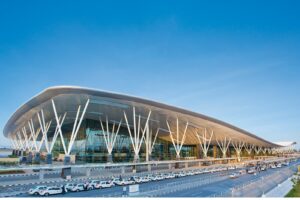Mar 28, 2024

Jaideep Mirchandani, Chairman of the UAE-based aviation conglomerate, Sky One, has underscored the potential benefits of a dual-airport system in bolstering India’s aviation sector.
Mirchandani emphasised that the strategy offered significant advantages, stating, “A dual-airport system will help alleviate air traffic congestion, improve accessibility and increase resilience.”
READ: Challenge Group launches freighter service to Mumbai
He pointed to the success of major global cities like London, New York, Shanghai, and Tokyo, each boasting dual/multi airports. With India witnessing exponential growth in air travel, the adoption of a twin airport strategy appears imperative for major cities to effectively meet escalating demands.
“The Ministry of Civil Aviation’s announcement in October 2023 outlined plans to develop six dual airports in India by 2030. Notable initiatives include the Noida International Airport at Jewar, supporting Delhi’s aviation needs, and the DB Patil International Airport in Navi Mumbai, complementing Mumbai’s air traffic. Additionally, Manohar International Airport will serve as an auxiliary facility to Dabolim Airport in Goa,” Mirchandani added.
Looking ahead, the government aims to have 15 such facilities by 2040 and over 30 by 2047, overseen by the Ministry, to accommodate an estimated 900 million passengers annually by 2030.
“A dual airport system holds promise for decongesting existing airports and expanding infrastructure to meet escalating travel demands. As current airports approach saturation, the need for new facilities becomes paramount,” stated Mirchandani.
He went on, “A 2023 study on ‘Travel Trends in the Next 30 Years’ underscores the necessity for various airport types to cater to future city needs, from business hubs to leisure gateways.”
READ: Kale joins AAPA to drive digital transformation in maritime trade
Mirchandani’s view was that such systems facilitate economic growth across regions, with benefits extending beyond city limits. Furthermore, strategic aircraft operations relocation to secondary airports optimises capacity allocation, enhancing international traffic and overall capacity.
Mirchandani concluded, “Transitioning to a dual airport system swiftly will support and propel India’s aviation modernization, solidifying its position as a global aviation leader”.
The post Twin airport strategy poised to strengthen India’s aviation sector appeared first on AIR CARGO WEEK.
Go to Source
Author: Jaideep Mirchandani




